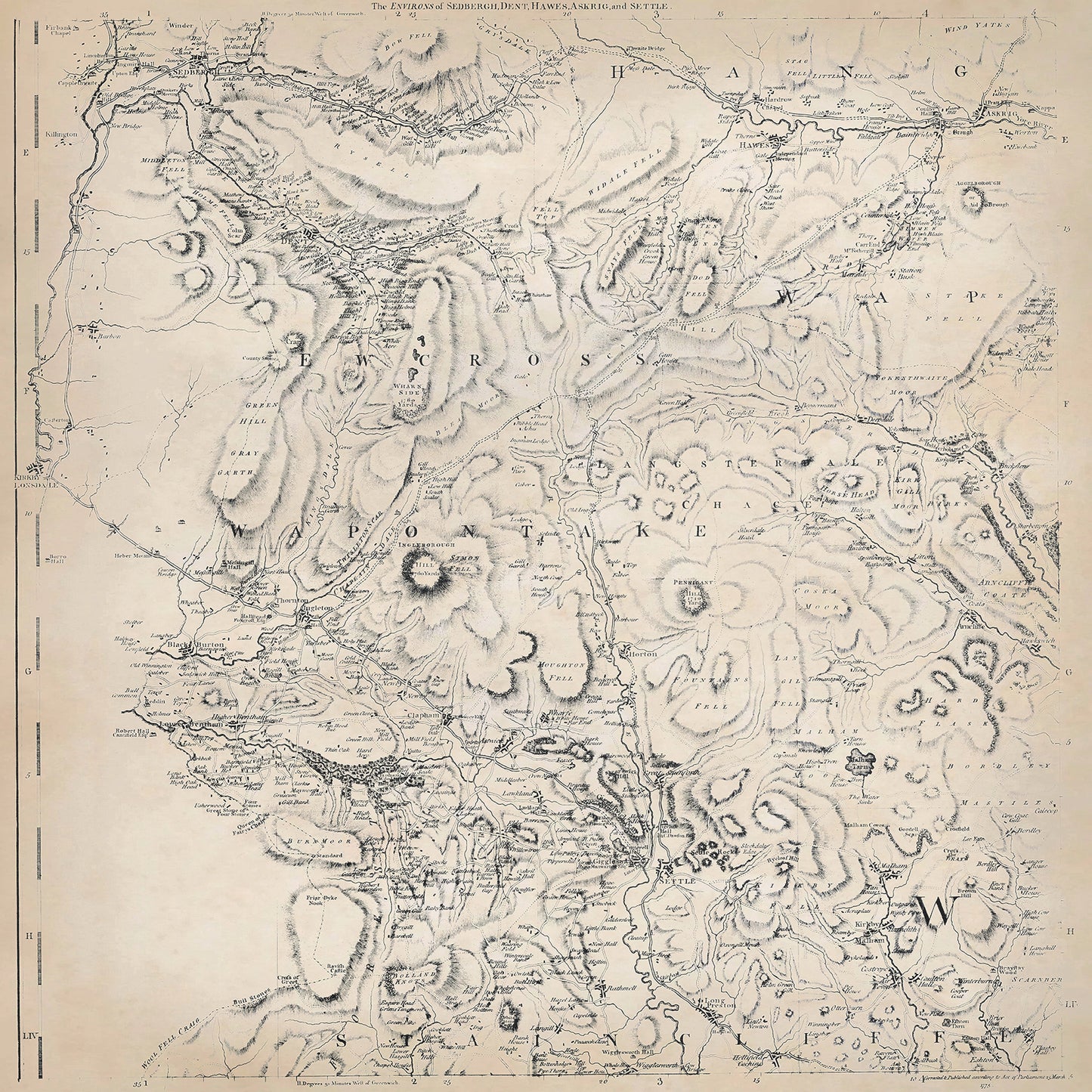Elite Wall Decor
Yorkshire in 1771 sheet 2-1 - shows the Sedbergh, Dent, hawes, Askrigg and Settle area
Yorkshire in 1771 sheet 2-1 - shows the Sedbergh, Dent, hawes, Askrigg and Settle area
Couldn't load pickup availability
Downloading this large file to phones or tablets is not recommended
This digital download is a high-quality 300dpi JPG image of one sheet from Thomas Jefferys "The County of York Survey'd" published in 1771. The image is crisp, clear and easy to read. It measures 60 x 60 cm, or 7087 x 7087 pixels but can be cropped or resized with the appropriate software. Download now to print whole or in part at home, or simply view it in close up on your device using image software such as Adobe Photoshop, Gimp, Windows Photo, or similar.
Sedbergh:
Sedbergh is a historic market town.
Agriculture was the primary occupation in Sedbergh and its surroundings. Farmers cultivated crops such as wheat, barley, oats, and vegetables. The area was particularly known for sheep farming, and many farmers reared flocks of Swaledale and Herdwick sheep.
Sedbergh had limited industrial activity during this period. Cottage industries were prevalent, with residents engaging in home-based manufacturing and craftwork. Many households were involved in textile production, spinning wool and weaving cloth. Some artisans also produced pottery, baskets, and other handmade goods.
Sedbergh School, established in the 16th century, was a notable educational institution in the town. The school's long history and academic reputation attracted students from across the region.
Dent:
Dent is a picturesque village located in Dentdale, a valley in the Yorkshire Dales. It is known for its scenic beauty and historic buildings.
Agriculture was the main occupation in Dent and its surrounding areas. Farmers cultivated crops such as oats, barley, and hay. The village was renowned for its sheep farming, and the local Swaledale and Dalesbred sheep were prized for their wool and meat.
Dent had limited industrial activity, with most residents relying on agriculture for their livelihoods. Cottage industries, similar to other towns in the area, played a role in the local economy. Some households were involved in spinning wool and producing textiles.
St. Andrew's Church, a historic church dating back to the 12th century, was a prominent landmark in Dent. The church's architectural features and stained glass windows attracted visitors and added to the village's charm.
Hawes:
Hawes is a market town located in Wensleydale, a valley in the Yorkshire Dales. It served as a center for trade and commerce in the area.
Agriculture was the primary occupation in Hawes and its surroundings. Farmers cultivated crops such as barley, oats, and hay. The area was known for its sheep farming, with farmers rearing Swaledale and Wensleydale sheep.
Hawes had a notable cottage industry focused on textile production. Many residents engaged in spinning wool and weaving cloth. The town's proximity to the Wensleydale Creamery, which produced the famous Wensleydale cheese, provided employment opportunities for cheesemakers and other dairy workers.
Hawes is home to the Dales Countryside Museum, which showcases the history, culture, and traditions of the Yorkshire Dales. The museum exhibits artifacts related to farming, rural life, and local industries, providing insight into the area's heritage.
Askrigg:
Askrigg is a picturesque agricultural village situated in Wensleydale, known for its charming buildings and scenic surroundings.

